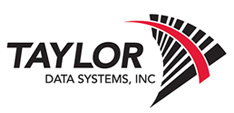BLOG
 5 Things to Consider Before Choosing a Thermal Barcode Label Printer
5 Things to Consider Before Choosing a Thermal Barcode Label Printer
If you’re thinking about purchasing a thermal printer for your barcode label application, be advised there are two types of thermal printing technology: Direct Thermal and Thermal Transfer. Each technology has its own pluses and minuses. The key is to choose one that most closely matches the needs of the label being printed. Both direct thermal and thermal transfer utilize a thermal printhead to apply heat to the surface being printed. Thermal transfer uses a heated ribbon to ‘transfer’ the desired data to your media. With direct thermal, there is no ribbon — the data being printed appears directly on the media being used. Thermal transfer printers can print on a wide variety of surfaces. Direct thermal media is sensitive to light, heat and abuse, so it typically has a shorter life.
Direct thermal technology is less costly to operate, simply because no ribbon is required. They are also highly reliable and durable, with few moving parts. With high reliability comes minimal downtime for repair and maintenance. Most of today’s mobile printers use direct thermal technology.
With thermal transfer, the ink from the ribbon is absorbed onto the media surface. This technique provides image quality and durability that is unmatched by other on-demand printing technologies.
Printing Barcodes
If barcode printing is a key part of your application, thermal label printers are the ideal choice. Thermal printing is a popular choice (vs. impact, inkjet or laser) because thermal technology is very precise, which is extremely important when printing barcodes. If the barcode quality is poor, then chances are you will have difficulty scanning the codes. Regardless of whether you’re printing text, images or barcodes, thermal technology delivers consistent print quality and fast print speed.
Label Applications – Which Technology is Best?
With direct thermal printing, a label can easily become overexposed to heat, light, or other harsh elements in their intended environment (on pallets in direct sunlight, for example), the media surface will darken and make the text or barcode unreadable. Because direct thermal media (paper, labels, wristbands, etc.) is so sensitive, this technology is not recommended in applications where the label will need to have a long life. However, depending on the usage conditions, the technology provides quality output and lifespan for a number of barcode printing applications including shipping labels, patient and visitor identification, receipts, and ticket printing.
Thermal transfer printers can accept a wider variety of media than direct thermal models, including paper, polyester, and polypropylene materials. Thermal transfer printers can create extremely durable wristbands, asset tags, and certification labels, in addition to common labels, tags, and tickets. The media and ribbon must be carefully matched to ensure print performance and durability.
By selecting the right media-ribbon combination, as well as specialty adhesives, you can create barcode labels that can stand up to extreme temperatures, ultraviolet exposure, chemicals and more. Typical thermal transfer applications include:
- Product Identification
- Product Tracking
- Asset Tagging
- Certification Labeling
- Inventory Labeling.
Printer Configuration & Cost
Printer configuration is one area where some cost savings will be available. Thermal transfer printers normally have the capability of printing either thermal transfer or direct thermal. If an organization is only going to print direct thermal, there are printers available that only have direct thermal capability. These printers are generally less costly to purchase because they do not contain any of the hardware necessary for driving and controlling ribbon. Eliminating the ribbon and ribbon hardware components also results in a less complex printer with fewer parts to wear and/or break, resulting in lower service costs and less downtime over the life of the printer. Additionally, operators don’t have to be concerned with ribbon settings or adjustments, leading to improved uptime and increased efficiency. The process of changing thermal ribbon requires downtime. Even the best operator still needs several minutes to replace used ribbon with a new roll and downtime costs money.
Label Life Requirements
Before selecting a thermal print technology, you should have a clear understanding of the required amount of time your labels will be in use, as well as the importance of the information being printed on the label. This is where direct thermal and thermal transfer separate themselves. Direct thermal printed labels do not offer the same lifetime as a thermal transfer printed label.
If the item being labeled will be in service for an extended period of time, or will be exposed to heat, sun or chemicals, you should go in the direction of thermal transfer. Examples might include pharmaceutical products or hazardous materials. These items should likely utilize thermal transfer printed labels to ensure a long lifetime.
On the other hand, if the item has a short shelf life and not exposed to harsh conditions for an extended period of time, then direct thermal should meet your needs. Sales receipts, food and beverage items and shipping labels are examples of applications where direct thermal is used.
Need advice on your specific application? We partner with industry-leading printer manufacturers like Honeywell who understand your challenges – Contact us today.






